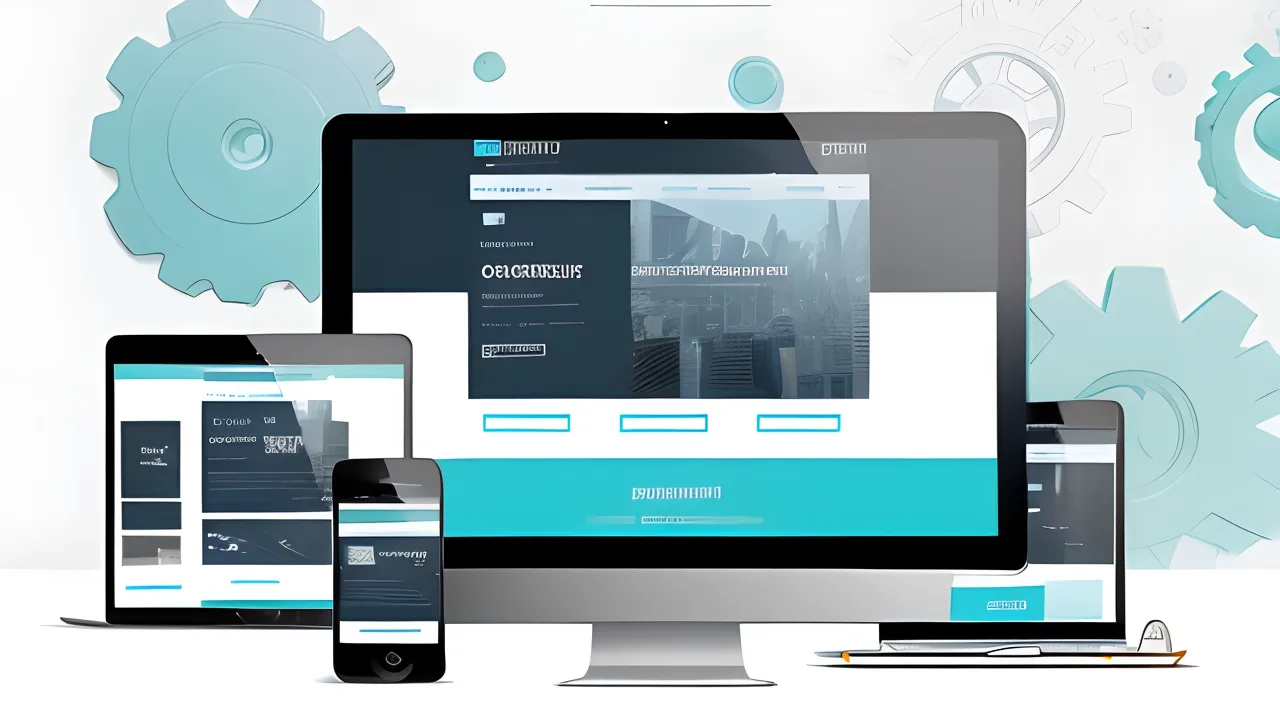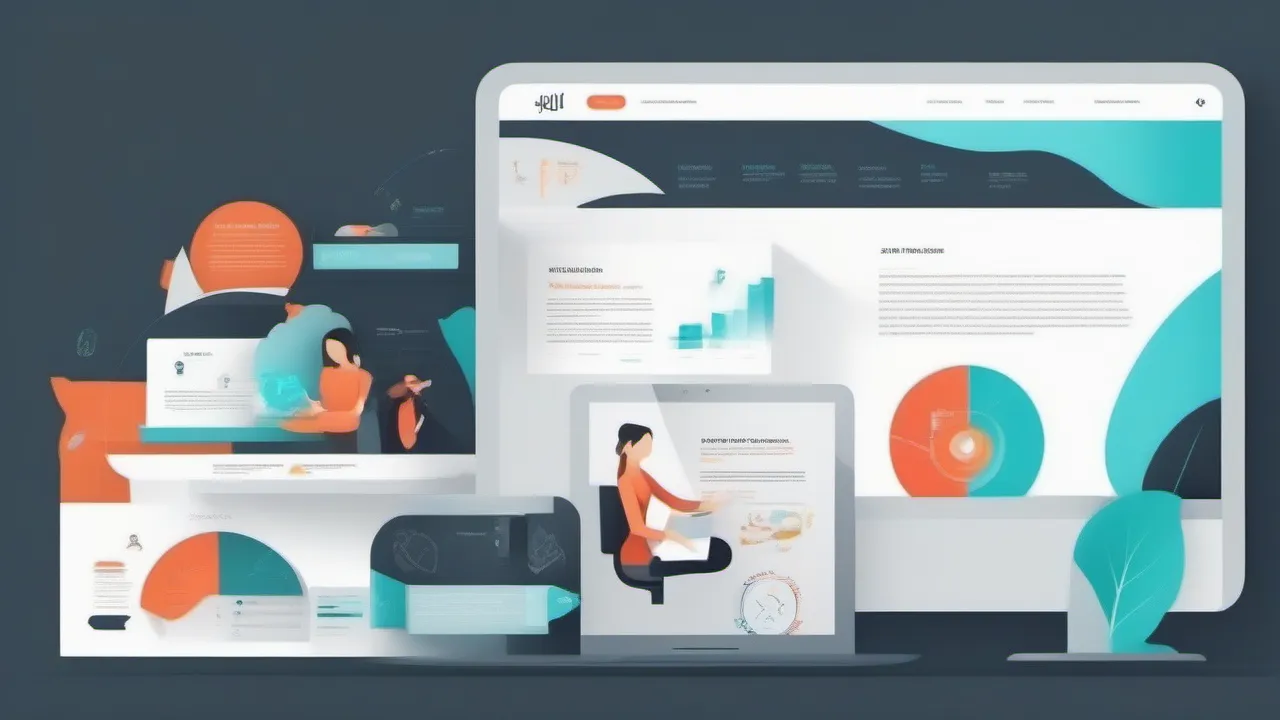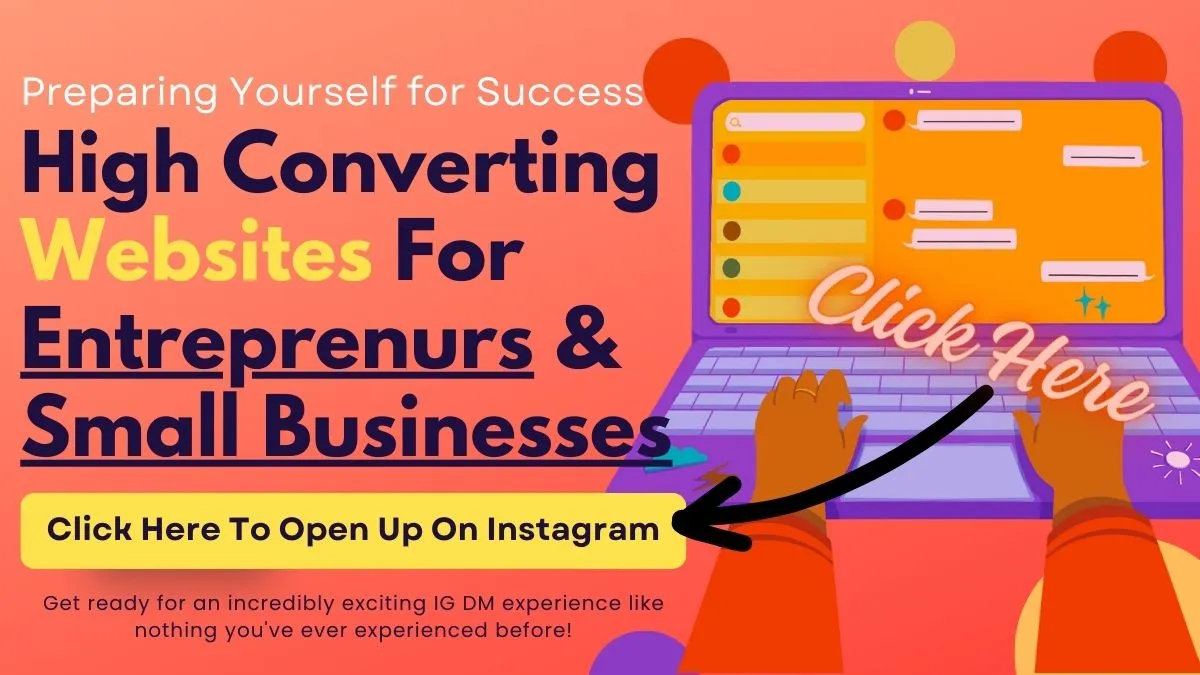Dodge The Website Design Mistakes: Optimize Your Brand Today

Optimize Your Brand With Beautiful Templates Here
In today's digital age, it is crucial for every small business to create a strong online presence. Website design plays a crucial role in creating a captivating online experience.
It’s not just about creating a visually appealing interface; it’s about crafting an intuitive and user-friendly experience that resonates with your audience and reflects your brand identity.
Small businesses, in their pursuit to thrive and connect, often overlook the significance of avoiding common website design mistakes, leading to disastrous repercussions.
This guide serves as a shining light for small businesses looking to navigate the complexities of web design, steer clear of typical mistakes, and improve the user experience in order to strengthen their brand visibility.
Importance of User-Friendly Design for Small Businesses

Role of Web Design in Business Representation and Conversion
Small businesses are the backbone of our economy, and a user-friendly design is the cornerstone of a successful online presence. A well-designed website acts as a virtual storefront, reflecting the ethos, values, and professionalism of a business.
The initial impression holds the power to either captivate or discourage prospective customers.
By avoiding design blunders and focusing on creating a seamless user experience, small businesses can significantly enhance their conversion rates and foster customer loyalty.
Correlation between User-Friendly Design and Brand Perception in Small Businesses
The way a website is designed speaks volumes about a brand. Poor design elements, confusing navigation, and a lack of mobile optimization can tarnish a brand's image and credibility.
Small businesses must prioritize user-friendly design to establish a positive brand perception and build trust among their audience.
A harmonious and intuitive design resonates with visitors, encouraging them to explore, interact, and connect with the brand, paving the way for lasting relationships.
Mobile-First Design: A Necessity for Small Businesses

Significance of Mobile Optimization in the Digital Age
Having a mobile-optimized website is no longer a luxury but rather a necessity for small businesses in an era where mobile devices predominate.
The majority of online users access websites via their mobile devices, and Google prioritizes mobile-friendly sites in its search rankings.
Small businesses that overlook mobile optimization risk alienating a substantial portion of their audience and diminishing their online visibility.
Embracing a mobile-first approach is paramount for reaching a wider audience, enhancing user engagement, and staying relevant in the competitive digital landscape.
Implications of Not Having a Mobile-Optimized Site in Google Search Results
The absence of mobile optimization can have severe implications for small businesses. It not only hampers the user experience for mobile visitors but also impacts the site’s SEO, leading to lower rankings on Google search results.
Small businesses must recognize the criticality of mobile optimization to ensure that they do not miss out on potential customers and opportunities.
A mobile-friendly site is synonymous with improved user satisfaction, higher search engine rankings, and increased conversion rates.
Steps for Small Businesses to Achieve a Responsive and Mobile-Friendly Website
Achieving a responsive and mobile-friendly website is a strategic move for small businesses to stay ahead of the game.
It involves adopting a responsive design that adapts to different screen sizes, optimizing images and multimedia elements for faster load times, and ensuring that the navigation is intuitive and the content is easily readable on mobile devices.
By implementing these strategies, small businesses can offer a superior mobile experience, retain mobile users, and boost their online presence.
Cluttered Site Navigation and Its Impact on Small Businesses

Repercussions of Having Too Many Links and Cluttered Navigation
For small businesses striving to make a mark, cluttered and confusing navigation can be a stumbling block to creating meaningful user interactions.
Visitors, when bombarded with excessive links and options, find it overwhelming and are likely to abandon the site. This not only leads to lost opportunities but also creates a negative impression of the brand.
Simplifying navigation and making it intuitive is crucial for small businesses to retain visitors, facilitate user journeys, and enhance overall user satisfaction.
Strategies for Small Businesses to Make Website Navigation Intuitive
Small businesses can overcome the pitfalls of cluttered navigation by adopting a user-centric approach.
This involves organizing information clearly, reducing the number of menu items, and ensuring that the navigation is consistent across all pages.
Utilizing clear and concise labels, incorporating visual cues, and providing easy access to important pages can significantly improve the navigability of the site.
By implementing these strategies, small businesses can create a seamless and enjoyable browsing experience, encouraging users to explore more and connect deeper with the brand.
Page Load Speed: A Critical Factor for Small Businesses Online

Impact of Slow-Loading Pages on User Bounce Rate and Conversions
In today's rapidly evolving digital landscape, time is absolutely critical. Slow-loading pages are a deterrent to user engagement and a major contributor to high bounce rates for small businesses.
Users expect websites to load swiftly, and any delay can lead to frustration and abandonment. Small businesses must prioritize optimizing page load speed to prevent user dissatisfaction, enhance user retention, and improve conversion rates.
SEO Implications of Slow Website Speed for Small Businesses
Beyond user experience, the speed at which a website loads has profound implications for its SEO performance.
Google considers page load speed as a ranking factor, and slow-loading sites are likely to be penalized with lower search rankings.
Small businesses must be vigilant about their website’s speed to maintain visibility on search engine results pages (SERPs) and attract organic traffic.
Employing optimization techniques such as compressing images, leveraging browser caching, and minimizing HTTP requests can aid in enhancing website speed and SEO performance.
Practical Insights for Small Businesses to Improve Website Load Speed
Small businesses can enhance their website load speed by adopting a series of optimization strategies.
This includes optimizing images for the web, reducing the number of plugins and scripts, utilizing content delivery networks (CDNs), and implementing lazy loading for images.
Regularly monitoring website speed and addressing any issues promptly can ensure a smooth and fast user experience, contributing to higher user satisfaction and increased conversions.
Effective Call-to-Action (CTA) Placement for Small Businesses

Role of CTAs in Guiding User Actions and Driving Conversions
Call-to-Action buttons are the gateways to user conversion for small businesses.
They guide the users through the conversion funnel, prompting them to take desired actions such as making a purchase, signing up for a newsletter, or downloading a resource.
The placement, design, and wording of CTAs are pivotal in influencing user decisions and achieving business objectives. Small businesses must optimize CTAs to make them compelling and effective in driving conversions.
Importance of Correct CTA Placement and Optimization for Different Screen Sizes
The placement of CTAs can make or break the conversion game for small businesses. CTAs should be positioned prominently where they are easily visible and accessible to users.
They must be optimized for different screen sizes to ensure that mobile users also have a seamless experience.
Using contrasting colors, concise and persuasive language, and clear value propositions can enhance the effectiveness of CTAs and boost conversion rates for small businesses.
Image Optimization: Enhancing Small Business Websites

Balance between High-Resolution Images and Website Loading Time
Images are the soul of a website, breathing life into it and making it visually appealing. However, for small businesses, striking the right balance between high-resolution images and website loading time is crucial.
Oversized images can significantly slow down the website, leading to a poor user experience and the loss of potential customers.
Small businesses must optimize images meticulously to maintain visual quality without compromising the website's performance.
Tools and Strategies for Small Businesses to Optimize Images Effectively
Small businesses can leverage various tools and strategies to optimize images without losing their essence.
Compressing images, choosing the right file format, and using responsive images that adapt to different screen sizes are essential steps in image optimization.
Tools like TinyPNG or ImageOptim can help reduce image file sizes without degrading quality.
By implementing these image optimization techniques, small businesses can enhance page load speed, improve the user experience, and boost SEO rankings.
Pop-up Implementation: Best Practices for Small Businesses

Pros and Cons of Using Pop-ups
For small businesses, pop-ups can be both a blessing and a curse. When implemented correctly, they can be powerful tools for lead generation and conversion.
However, intrusive and irrelevant pop-ups can annoy users and degrade the user experience. Small businesses must weigh the pros and cons of using pop-ups and employ them judiciously to avoid alienating their audience.
Best Practices for Small Businesses to Implement Pop-ups without Degrading User Experience
For small businesses aiming to utilize pop-ups effectively, adhering to best practices is paramount.
This includes displaying pop-ups with a clear and compelling value proposition, allowing easy dismissal, and avoiding excessive pop-up frequency.
Timing the pop-ups appropriately and targeting them based on user behavior can enhance their effectiveness and user acceptance.
By following these best practices, small businesses can leverage pop-ups as a strategic asset to drive conversions and build relationships with their audience.
Visual Comparison Testing: Avoiding Design Mistakes in Small Businesses

Future of Visual Testing and Its Role in Avoiding Design Mistakes
Visual comparison testing is emerging as a revolutionary approach for small businesses to identify and rectify design mistakes before they impact users.
It enables businesses to compare different versions of their website visually and pinpoint discrepancies and errors.
Embracing visual testing is a proactive step for small businesses to ensure design consistency, enhance user satisfaction, and stay ahead in the competitive digital landscape.
Importance of Visual Regression Testing in Small Business Web Development
Visual regression testing is crucial for small businesses to maintain the integrity of their web design.
It allows for the detection of unintended design changes and ensures that modifications do not disrupt the visual appeal and functionality of the website.
By incorporating visual regression testing into their web development process, small businesses can avoid design pitfalls, deliver a superior user experience, and bolster their online presence.
Conclusion: Enhancing Web Design for Small Businesses

In the dynamic digital ecosystem, small businesses are the vibrant threads weaving the fabric of our economy.
The journey to carve a niche in this competitive landscape is fraught with challenges, and avoiding common website design mistakes is pivotal.
Small businesses are not just building websites; they are crafting experiences, telling their unique stories, and connecting with their audience on a deeper level.
The essence of avoiding website design pitfalls is not merely about aesthetics; it’s about creating a harmonious synergy between visual appeal, functionality, and user experience.
It’s about understanding the needs and preferences of the audience and delivering value at every interaction.
Small businesses, by embracing user-friendly design, a mobile-first approach, intuitive navigation, and optimized images, can create a lasting impact and elevate their brand presence.
The journey of enhancing web design is continuous, filled with learning, adapting, and evolving. It’s about staying abreast of the latest trends, technologies, and user expectations.
Small businesses must be proactive, innovative, and meticulous in their approach to web design, ensuring that every element resonates with their brand ethos and values.
In conclusion, the path to avoiding website design mistakes and building a successful online presence is illuminated with the lights of empathy, innovation, and user-centricity.
Small businesses have the power to turn the tide, create meaningful connections, and write their success stories in the digital world.
By avoiding the common pitfalls in web design, small businesses can enhance the user experience, boost conversions, and soar to new heights in the digital sky.
Let this guide be the compass for small businesses in their journey to navigate the intricate waters of web design, avoid the common reefs of mistakes, and sail smoothly towards the horizon of success and fulfillment.
Here’s to empowering small businesses to create, innovate, and elevate in the ever-evolving digital landscape!




